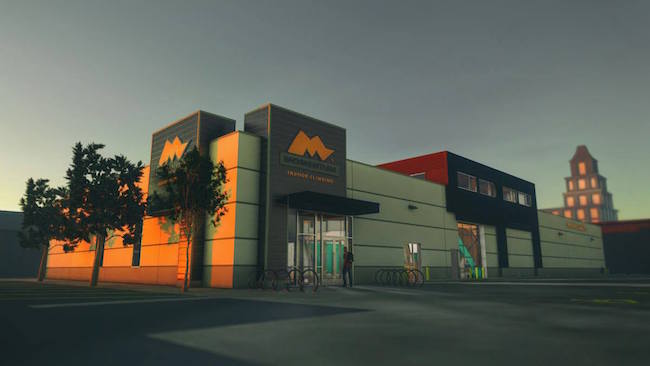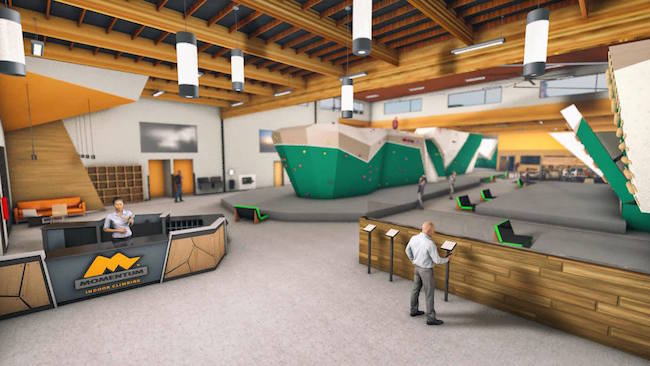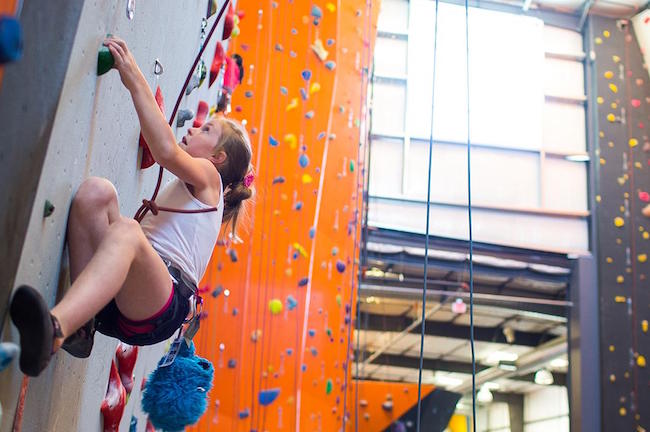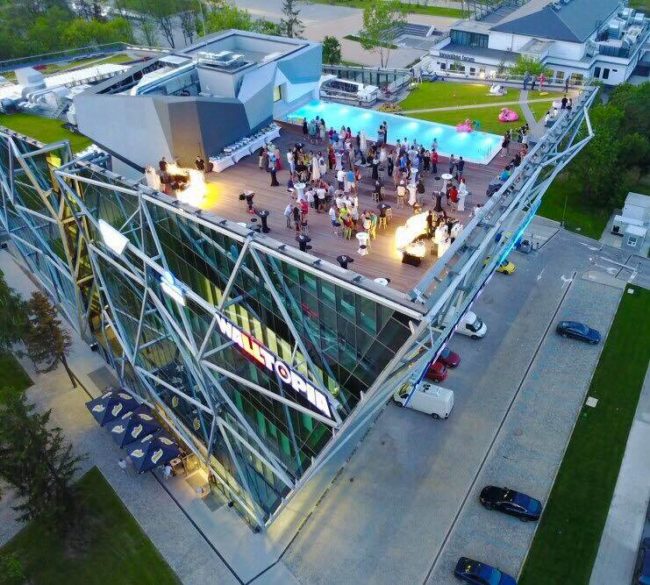A Public Relations Primer
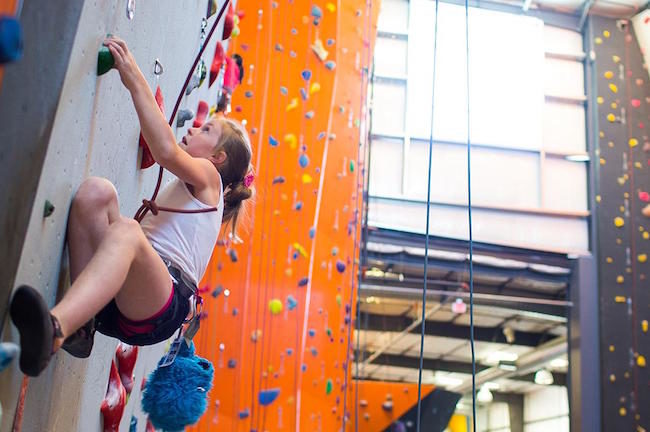
By John Burgman
Given the nature of gym climbing, people spend a lot of time standing around and making small-talk; in between all the roping up and resting and chatting about beta, there are bound to be peripheral subjects entering the conversations. Couple this with the realities that gyms inherently have a number of hazards, are often staffed with a young—perhaps inexperienced—workforce, and can play host to accidents ranging from minor to serious, and suddenly any manager has a recipe on his hands for a potential public relations headache.
Compounding matters is that PR protocol has not yet caught up with the rapid growth that gyms have experienced in recent years. Other fitness-based facility industries, such as health clubs, possess a more extensive network of PR specialists and staffers, and many have resources and literature for handling any number of industry-specific issues or even “crises.” But climbing gyms are largely void of such personnel and resources; in climbing, it is often the gym manager, alone, handling all the publicity.
So, what is the best way to effectively handle PR, from the perspective of a climbing gym?
“Don’t rely on your advertising/publicity alone to drive your reputation. Your reputation should be built first and foremost on a superior product,” says Sean Duffy, one of the world’s foremost brand strategists. Duffy is the namesake behind his marketing firm, Duffy Agency, and has worked with diverse clientele ranging from Gatorade and PepsiCo to Ikea and Saab. He says there are thousands of ways for a brand to build a good reputation, but advises taking a systematic approach. “Being first to arrive at a customer insight confers a powerful competitive advantage and is the key to all good marketing and business innovation,” he says.
In the context of a climbing gym, Duffy advises thinking of the business “in 3-D.” A gym has a “core product,” which would be the climbing walls, but it also has “value-add features”—such as pricing plans, staff, lockers, and amenities—and “value-add associations,” which could be any associations beyond those “value-add features” (including partnerships around town and relationships built with other brands). “Be looking across all three dimensions to find ways to innovate, improve and compete,” urges Duffy. All three of those elements can be augmented with their own promotion and marketing.
Repairing a Damaged Reputation
Once a reputation has been established, it’s important for managers to realize that status is never set in stone. This is less of an obvious point than it might seem, as everyone can think of a company, brand, or place—pick any industry—that “used to be good” and then perplexingly lost its way, never to return to that same level of prominence and popularity. So, gym owners should consider maintaining—or repairing—a reputation to always be a systematic process that might not have fast results. Quickly fixing a problem might still take a long time to translate to public awareness.
“I always say that you need to do damage control right away. Correct the problem with a solution before it gets out of hand,” advises Nicole Dunn, CEO of the health and wellness PR agency Dunn Pellier Media. “If five people hear that your business has issues, imagine how fast that word of mouth will travel, and soon enough you will find yourself with a big problem—no customers.”
“Remember, you may not always agree with customer criticism (e.g. consumers often draw conclusions on false information), but if enough of them are forming a negative perception, then it is real and needs to be dealt with swiftly,” says Duffy. “Brand management is perception management.”
While climbing gyms might seem tangential to health and wellness, the dearth of PR experts in the climbing industry means that it’s prudent to reach outward—to strategists like Duffy and Dunn—in an attempt to construct PR protocol for gyms. Specifics for PR correlate to whatever your facility adds to the community, explains Dunn. Figure that out first, and then make an effort to spread the word through media.
“I always ask people to think about what distinguishes your program, product or yourself from others,” Dunn says when describing PR trends and best practices. “Come up with a unique way to portray your expertise or special brand technique. Identify and research five places that you could write content about your brand or contribute to. Some national online suggestions: Forbes, Women’s Health, Men’s Health, Entrepreneur, LinkedIn, Fast Company, Huffington Post, and more. For the local side focus on small business publications and local news outlets. Before you approach anyone, come up with content to present to a reporter or journalist: [For example,] Best Climbing Gyms in Los Angeles, [or] The Newest Place in Town to Make Friends—The Climbing Gym, [or] Learn What Climbing Can Do for Your Mind, [or] Top 10 Benefits from Climbing. Come up with content that is filling a need for the community (and the journalist) but at the same time giving your business a boost in the media and a chance to grow and thrive in the community.”
Duffy points out that marketing and promotion are increasingly tech-driven. This can actually benefit small and mid-sized climbing gyms because it means they can have the same tech-reach as larger competitor gyms. He advises gym owners to set aside an afternoon to brainstorm ways that technology could be used “to disrupt or at least innovate” when it comes to promoting and supplementing various aspects of their gym. He thinks the next big idea in the indoor climbing industry is likely to come from such free thinking about technology.
Navigating The Mainstream
There are several instances that can impact a gym’s reputation, but none are more serious than a significant injury occurring at the facility. And such a major event might garner attention and coverage from mainstream media outlets; suddenly an unfortunate incident that might have only been witnessed by a few people inside the gym is reaching thousands far and wide via the evening news broadcast, the morning newspaper, social media, and gossip.
Sarkis Barnett is the Facility Manager at Cleveland Rock Gym, and speaking hypothetically, he stresses the importance of a gym being truthful but also knowing all the facts before going public with PR. “If something serious happens at a gym that interests the mainstream media, we would respond with being completely honest and open about what happened, even if it was our fault,” he says. “First, we would not speak about anything unless we know for sure what happened. Even, say, a climber who decks and his harness is still hanging up on the rope above and it seems like they didn’t secure their harness—we would not speculate or say anything until a proper investigation was completed. If it was something that was our fault, we feel obligated to share it so other gyms, people, and especially climbers can learn from it.”
It would likely be the gym owner—rather than the manager—who would handle the PR for any serious event or injury at a gym, but the manager might still play the important role of handling more casual discourse related to the event when customers start asking questions—and also advising the gym staff on what to say or not say. “I would be dealing with the social media side of things and once an investigation was concluded, I would most likely make a statement on there,” Barnett also notes.
Undesirable gossip or PR doesn’t always come in one fell swoop like it might with a customer injury, however. For example, Bryan Pletta, owner of Stone Age Climbing Gym in Albuquerque, New Mexico, makes a habit of keeping tabs on his gym’s online reviews at sites like Yelp and Google Maps—and a couple of years ago, he noticed some negative comments starting to appear on the sites. He determined that the negative online reviews—out of the norm for his gym—were the result of poor customer service.
“We had a couple of employees who, while good at times, were not always friendly, smiling faces, and at times were not giving the level of customer service that we had as a standard,” Pletta remembers. Fixing the problem—and, in turn, stopping that negative chatter online—involved staff-wide discussions at the gym, but also coaching specific employees on how to better handle certain situations that might arise.
Pletta points out that it’s important to reach out to the customers in some cases too—not only to show them that you’re aware of their complaints, but also to provide concrete information on how a problem will be fixed—and then be diligent in following through with your promises. He admits that it’s challenging when gym managers find themselves in positions of having to curb negative chatter and gossip once it has already begun; it’s much more manageable to foresee any problems beforehand, and ideally, “don’t ever get to the point where you’re having to battle bad PR.” But Pletta also thinks there can be a silver lining to criticism such as those on Yelp and Google: “Whereas you can view bad reviews as being a negative, in some ways it was actually a positive because it was a tool for me to see problems in my business that were happening every day, whether I got a bad review or not.”
Pletta’s experience underscores another point made by Sean Duffy: Gym managers should sweat the little stuff. “Little things are huge to building your brand reputation,” says Duffy. “The way staff treats customers is probably one of the best examples of this. Treating people well consistently is not always as easy as it sounds, but it can be an effective and inexpensive way for a gym to differentiate its brand.”
A Need For More
Pletta, Barnett, and others acknowledge that climbing, on the whole, doesn’t have as much concrete PR protocol as other industries. Certain procedures will likely become commonplace as standards solidify over time. “I think a lot of operators just sort of do well by accident, without really focusing on PR,” says Pletta. “But the day is going to come where that doesn’t really cut it anymore.”
“For all climbing gyms, it’s very important to represent climbing positively to the public,” says Barnett. “Properly teaching and maintaining good belay and climbing safety related practices are important, and I hope they become a bigger part of the climbing gym industry. People getting hurt at facilities can create a bad reputation in the climbing community and paint a bad picture of climbing to public who may see climbing as some death-defying sport. The less accidents outside and inside, the better climbing can be accurately portrayed. When things do go wrong, we need to be open about why, and educate the public on what occurred and what to do to prevent it from happening again.”
Pletta has developed a systematic approach for garnering PR at Stone Age—and it could be applied to any gym across the country. Comps have proven to be good vehicles for generating buzz at his gym—a comp is enticing to long-time climbers and people totally unfamiliar with the sport, and can easily be pitched to media outlets. “Every time we have a major competition, we put out a news release, and we try to get the news stations down here, we try to get written up in the newspaper,” says Pletta. “We’ve had mixed success with it, but we always talk about it and hope that we get the coverage.”
News outlets tend to be more interested in the youth and participatory aspects of comps, rather than the competitive angle. “Especially with our youth competitions, we find that’s something where even though it may not be climbing media, the local news channel wants to cover things with kids and sports,” Pletta says. He advises gym managers to do some of the journalistic work for the media, explaining, “I might send [the news stations] video that we took from a competition last year to show them what they might get if they come down here with a cameraman; or [I might] write a little bit of the article for them, or say, Hey, if you guys want to cover this in the newspaper, let me know and I’ll send you some pictures and I’ll send you the results tomorrow.” He adds, “Anything that you can do to make their job easier will help you get coverage in the news.”
Persistence is the key for successful gym PR. Furthermore, managers would benefit from reaching out to all possible promotional outlets—establishing contacts there, and getting to know who works on staff during the weekdays and the weekends at various media organizations. Pletta usually sends out a news release three to five days before a weekend comp, then calls the news outlets on Friday to double-check that they got the press release and see whether they’ll be able to send a camera to cover the event. He’ll typically follow-up again on Saturday morning—the day of the comp—to see if a news outlet is still planning to send a camera crew. “Make those phone calls and keep touching those bases,” he says. “Sometimes it works, sometimes it doesn’t, but it’s really the only thing you can do.”
Colorado Gym Closes Up Shop
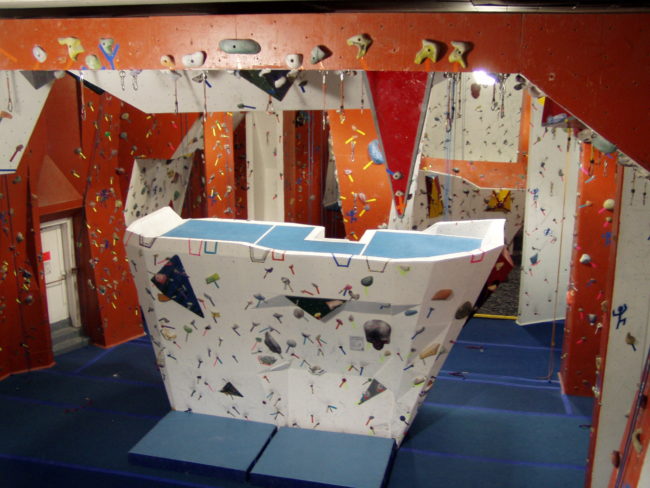
Thirllseekers, one of Colorado’s oldest climbing gyms closed its doors for the final time last week. President and owner Kevin Smith said he is getting closer to retiring.
Thrillseekers has been at the same location since it opened 25 years ago. Smith told the Business Den, that when it opened, there were just a few climbing gyms scattered around the Front Range: Paradise Rock Gym, which closed in 2008, and CATS Climbing and Boulder Rock Club in Boulder.
Now the Denver area is a hotbed of gym development. In the last year, Ubergrippen in Stapleton opened and closest to Thrillseekers is what will become the US’s largest gym in Englewood. Movement Climbing + Fitness is opening its RiNo location this summer, and the The Valley Climbing and Fitness plans to open next year.
Smith, now in his 60s, said he wanted a place to teach beginner climbers how to belay and use proper technique, especially when he couldn’t take them climbing outside. Now he sees 50 to 100 climbers, from beginners to experts, passing through the doors every day.
“We’ve always been catering to the climber who prefers to climb out-of-doors, so it’s greatly based on weather,” Smith said.
Our Debt Of Gratitude!
Dear Friends,
So many of you have expressed kind words and wishes, both here and in person. You…
Posted by Thrillseekers Climbing Gym on Sunday, March 18, 2018
Gym Employee Falls 32 Feet
A 26-year-old climbing gym employee was inspecting equipment at the end of the day when he appears to have lost his grip and fell 32 feet.
It happened in front of horrified workers at a shopping centre called The Heart of Yiwu in East China’s Zhejiang Province. The employee survived the fall but was found unconscious by medical personnel called to the scene.
According to the Mirror, He reportedly suffered multiple broken bones and continues to receive treatment at a local hospital. The indoor climbing center said in a statement that he had two years of climbing experience, and that, because he uses a hearing aide, he appeared not to have heard his coworkers asking him not to scale the wall without a harness.
Welcome to MyClimb!
The goal of this article is to introduce the MyClimb app for climbers and MyClimb’s Climbing Gym Platform. Stay tuned for a series of articles with more in depth information on both the MyClimb app and MyClimb’s Climbing Gym Platform.
What is MyClimb and How Did MyClimb Start?
The MyClimb app is the brainchild of Bill Brooks, the founder of MyClimb. Bill started climbing when he was five years old and was instantly hooked. The idea for creating MyClimb was planted when Bill took a long cross country road trip in his truck, which was stuffed with trad, sport, ice gear and bouldering pads. The concept behind MyClimb is to track where you have been, what you have climbed and stay in touch with all of the climbers who you have met along the way!
Climbers can log and track their indoor climbing, sport climbing, bouldering, traditional and ice climbing in the MyClimb app. MyClimb’s social features and climbing partner finder help build community around gyms and climbing areas as well as a global climbing community.
Over the last three years, climbers from 97 countries have logged over 1 million climbs in 2,961 gyms, and 3,952 outdoor climbing areas. The MyClimb community has also forged friendships around the world with climbers sharing photos, giving updates on outdoor conditions, and sharing training tips and encouragement.
What is MyClimb’s Climbing Gym Platform?
MyClimb’s Climbing Gym Platform offers gyms a suite of tools to engage their members and tools to optimize and organize Route Setting Management.
Analytics through the app assist in informing route setting decisions. Through the app, climbers can submit written feedback to route setters or vote on grade accuracy and the quality of the climbs. Route Setters can also track which climbs or areas of the gym are the most popular, as well as what grades people are actually climbing in your gym.
To help create community, gyms can also run fun Challenges, as simple as who can do 100 climbs this month, to more complex events.
Learn more about MyClimb’s Gym Platform and MyClimb at www.MyClimbgym.com
Contact MyClimb:
contact@myclimbapp.com
Download MyClimb on the Apple App Store: https://itunes.apple.com/us/app/myclimb/id925359604?mt=8
Download MyClimb on Google Play: https://play.google.com/store/apps/details?id=com.myclimb&hl=en
Walltopia’s WICS – Time to Get Global
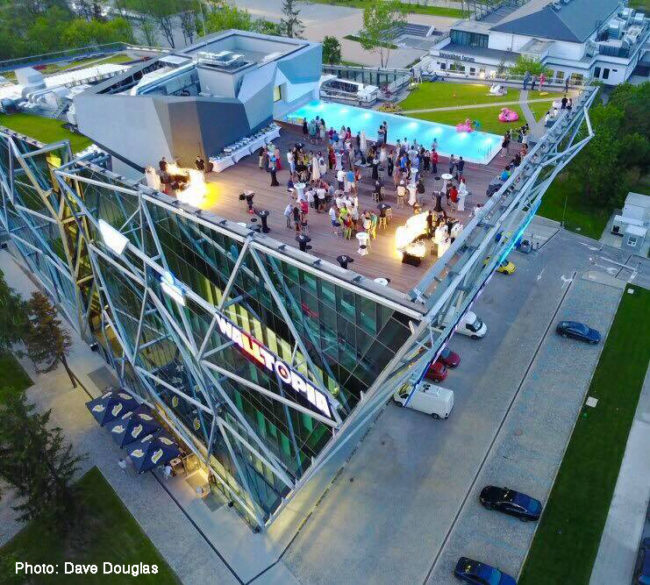
INDUSTRY GROWTH
Indoor climbing has evolved from a training activity for experienced climbers into a workout for a wide range of age and ability groups. For a mere 20 years climbing gyms have transformed from dusty dark shacks into spacious light facilities that also accommodate fitness areas, yoga studios, specialized kid zones, cafes, and retail areas. They serve a wider audience and attract more and more participants every year. Research shows that each year more than 1 million people climb for the first time, on a global scale*. The climbing industry has seen a steady growth of an average 10% for the US and Canada in the past 7 years alone, and that trend is expected to remain similar in 2018. The number of climbing gyms worldwide has increased by 50% since 2007.
“At Walltopia, we’re witnessing a steady average growth of 45% in the number of projects we sign every year since 2012 with the impressive number of 53% more sqft climbing surface produced and built only for the last year,” says Ivaylo Krastev, COO at Walltopia.
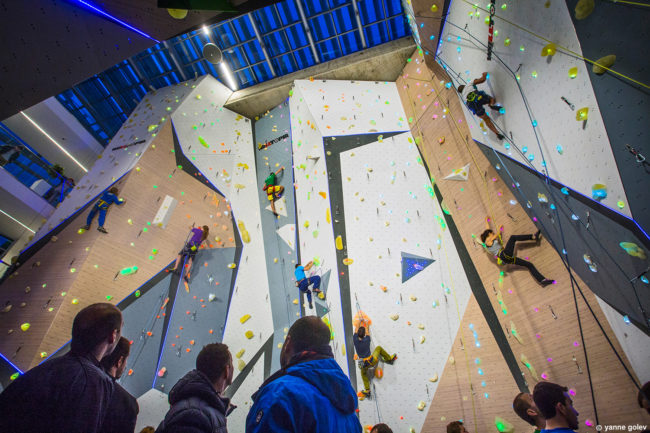
With such an incredible growth of the industry, it’s about the right time to start thinking global – to hear different opinions from different countries around the world, to exchange experience, face challenges and talk about the future of indoor climbing together. That is why the WICS conference program is planned to start with an open discussion about The Future of Indoor Climbing in which everyone will be welcome to join the talk and express their vision.
MARKET DIVERSITY & POTENTIAL
It’s a well-known fact that the most developed markets are North America and Western Europe – with the most saturated parts of them being the places that have traditions in alpinism and rock climbing. However, in recent years indoor climbing has been gaining popularity in places that have zero outdoor climbing features within a radius of hundreds of miles. Many young winning competitors now originate from places that don’t have an outdoor climbing scene. Areas like Illinois and Texas are opening facilities of 25 000 sqft. “Over 50% of our clients have never been outdoor climbing on a real rock and they have no interest in that,” shares Jeffery Bowling, Business Development Manager at Touchstone Climbing, who corners the market in California, operating 12 climbing facilities throughout the state. The potential of a given market does not relate to the presence of natural climbing features anymore but rather – on demographics. As long as there are active people who want to exercise in the area, then indoor climbing is a prospective business there. At WICS visitors will have the opportunity to learn the stories of climbing gyms operating in a great variety of different markets when it comes to climbing traditions, market maturity and target group diversity.
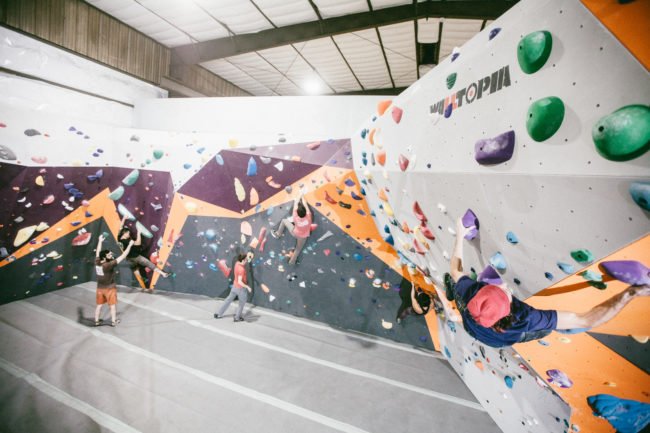
THE IDEA
The idea behind WICS emerged last summer during a small client gathering at Walltopia HQ with climbing gym experts from the US, UK, UAE and France with various backgrounds. The occasion triggered interesting and inspirational discussions about current problems, trends and business models in indoor climbing, as well as the direction in which the industry is headed, and what is to be expected in the coming years. After deeming the event a success and receiving great feedback from the gym owners who attended, the Walltopia team decided that it was time for the indoor climbing industry to have a bigger event on a global scale. We decided to bring professionals from different continents together to exchange ideas, experience and vision on the present and future of indoor climbing.
“With the other main branch of Walltopia – active entertainment attractions targeting the amusement industry – we attend over 20 different summits and conferences and most of them are on a global scale. When it comes to climbing, there are only 3 events every year and all of them are focused on a local market. For us, being an international company that works with gym operators worldwide and aims to understand their needs and deliver the right product, it was natural to initiate the first global gathering of the industry.”, says Alexandra Hristova, Head of Marketing at Walltopia.
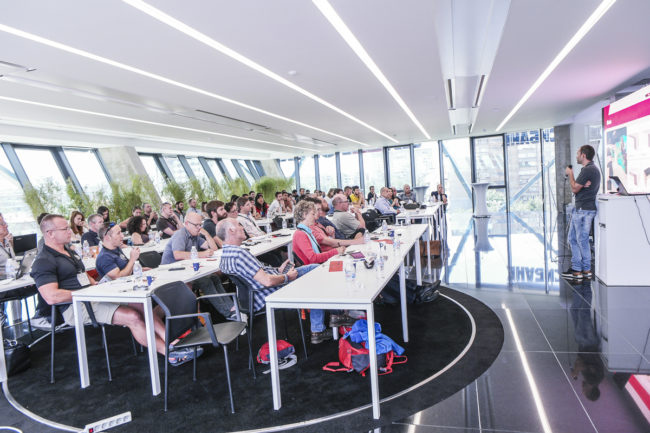
THE ESSENCE
WICS will consist of two main parts – conference programme and exhibition area. The conference will have a series of panels featuring climbing gym owners and professionals from around the globe who will share their views and ideas on the hottest topics concerning our community, in the form of open discussion rather than a one-man presentation. Get ready to hear and ask questions about everything from getting loans to the latest trends in climbing gym design. The conference’s entire schedule and list of confirmed speakers can be found on the event’s official website.
Aside from the conference, WICS will host a small exhibition area where manufacturers and suppliers from the industry can showcase their latest products, and meet potential clients and partners. Attendees will also have the opportunity to host a presentation after applying online and receiving an approval for the topic. The event will have separate time slots for both the panel discussions and the exhibition every day, giving all exhibitors the opportunity to attend the conference, and preventing the panels from “stealing” any attention from the exhibit hall.
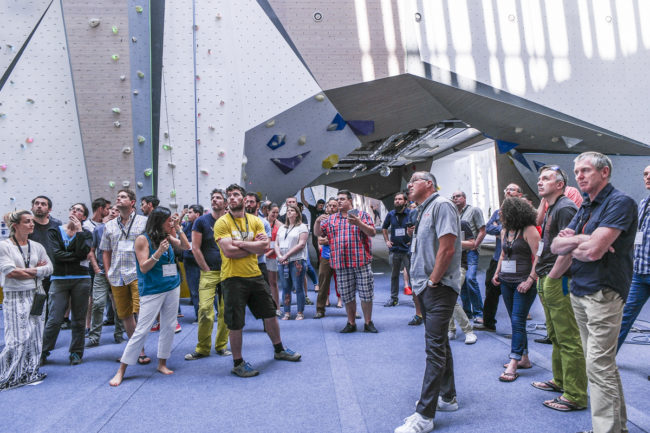
THE PEOPLE
Gym owners and industry experts from countries like USA, Australia, UK, Germany, Austria, Switzerland, France, Belgium, Finland, Sweden, Latvia, Slovenia, UAE, Malaysia, New Zealand, Netherlands, Belgium and more have already secured their spot in the conference.
THE CHERRY ON TOP
Climbing at Walltopia Climbing & Fitness will be free for all attendees throughout the event. Besides that, after three days of business talk, the WICS team will loosen things up by hosting the rooftop party of the year at Walltopia HQ, close by the event center that will accommodate the conference. All visitors are invited to grab a drink, enjoy the sunset and then dance the night away! WICS will take place on June 7th till 9th in Sofia, Bulgaria.
For more info and full agenda, visit the event website at https://climbingsummit.com/
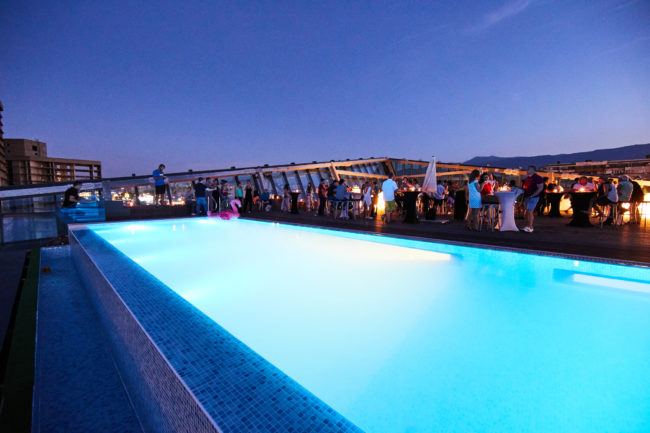
*Data based on waivers signed on the initial visit.
USA Climbing CEO To Step Down
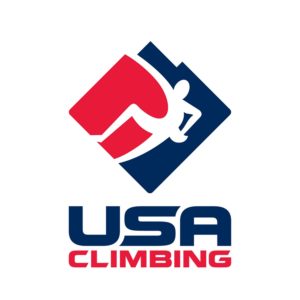 Kynan Waggoner, the CEO of USA Climbing, has expressed his intention to step down by the end of calendar year 2018, giving the USAC Board of Directors sufficient time to identify a successor and to facilitate a smooth transition.
Kynan Waggoner, the CEO of USA Climbing, has expressed his intention to step down by the end of calendar year 2018, giving the USAC Board of Directors sufficient time to identify a successor and to facilitate a smooth transition.
“It has been an immense privilege to serve USA Climbing, and I am incredibly proud of what we have achieved in the last 12 years,” said Kynan. “We have experienced robust membership growth and are fortunate to have recently become a member of the Olympic family of NGBs. We continue to annually sanction and manage over 300 local, regional, divisional and national competitions at over 200 different climbing gyms and venues across the country. It has been tremendously gratifying to work with the USA Climbing community, including our staff, Board of Directors, members, volunteers, partner climbing facilities, and sponsors. After 12 years with USA Climbing, it is now time for me to move on.” – Kynan Waggoner
Waggoner has seen from the inside every leadership change at USAC, starting in 2008 when their first official CEO, Anne-Worley Moelter, left the organization to start the Movement Climbing gym in Boulder, CO. The USAC Board then hired and had great hopes for Keith Ferguson, a former pro-rodeo executive and US Olympic Committee employee. Ferguson left in 2012, and after an extended period with no CEO, the Board brought in Mary-Claire Brennan a former marketing executive at the USOC. She was in the corner office for less than a year. Waggoner started his tenure as CEO in the summer of 2014
The USAC Board is currently convening a search committee to identify Waggoner’s successor. This effort will be led by Greg Padovani, Sr, Chair of the USAC Nominating and Governance Committee (NGC). If you would like to be considered as a member of the search committee, please contact Greg at greg@usaclimbing.org.




